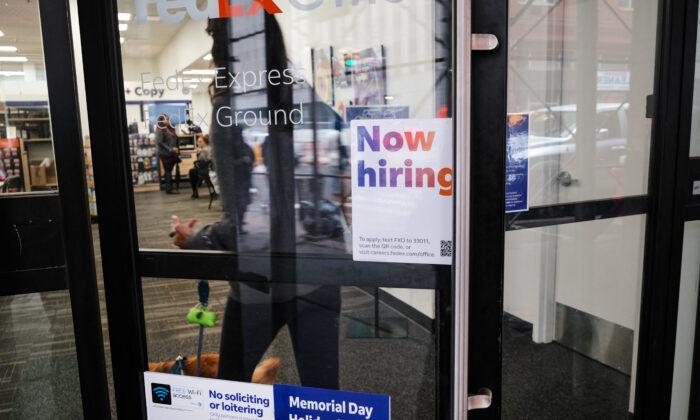The unemployment rate edged down to 3.5 percent, from 3.6 percent. The labor force participation rate ticked up to 62.6 percent, up from 62.5 percent.
Average hourly earnings rose 0.3 percent month-over-month, up from 0.2 percent. On a year-over-year basis, average hourly earnings slowed to 4.2 percent, from 4.6 percent.
Leisure and hospitality led the way, with 72,000 new jobs. This was followed by government employment (47,000), professional and business services (39,000), and health care (34,000). Transportation and warehousing added 10,000 positions.
The retail sector lost 15,000 jobs while manufacturing payrolls remained relatively flat.
The number of people employed part-time for economic reasons was flat at 4.1 million, and the number of people not in the labor force who want employment was unchanged at 4.9 million. The number of persons working two or more jobs rose to 7.979 million, up from 7.904 million. Self-employed workers declined to 9.839 million, down from 10.119 million.
Peter Schiff, the chief economist and global strategist at Euro Pacific Capital, tweeted that the jobs data was stronger because of new government workers.
“The only reason the Mar. jobs report wasn’t well below estimates was that governments hired a lot more workers than expected,” he said. “When the private sector creates #jobs, businesses absorb the cost. But when governments create jobs, taxpayers pick up the cost. That makes things worse.”
U.S. stock and bond markets were both closed on April 7 for Good Friday.
The U.S. Dollar Index, a measurement of the greenback against a basket of currencies, surged above 102.00.
The U.S. Treasury market was mostly up at the end of the trading week. The benchmark 10-year yield rose about 5 basis points to nearly 3.36 percent.
Cracks in the Job Market
Leading up to the March jobs report, there were indicators that the Federal Reserve’s tightening efforts have led to cracks forming in the U.S. labor market.Last month, private payroll growth climbed 145,000, down from an upwardly revised 261,000 in February and below the forecast of 200,000, according to the ADP National Employment Report. Job losses were seen in financial activities (negative 51,000), professional and business services (negative 46,000), and information (negative 7,000).
“We know companies are approaching 2023 with caution, though the economy is still creating jobs. With rate hikes continuing and companies’ reigning in costs, the large-scale layoffs we are seeing will likely continue,” said Andrew Challenger, senior vice president of Challenger, Gray & Christmas, Inc., in a statement.
The ISM Manufacturing Employment sub-index contracted for the second straight month to 46.9, while the ISM Services Employment sub-index fell for the first time since December.
Some economists have argued that a resilient labor market has prevented the United States from slipping into a recession.
Overall, there are roughly two open positions for every out-of-work job seeker, “and the share of employed U.S. adults who are actively applying for new roles has risen in recent months,” the report stated.
“At the margins, there are some signs that the labor market is cooling as labor force participation edges higher, wage growth moderates and businesses rein in hiring plans. However, a full year after the Federal Reserve began raising interest rates, most labor metrics still reflect a robust labor market,” Morning Consult economists wrote.
But with weak economic data in recent weeks and a potential slowdown in the jobs arena, conditions might be changing, says Dan Kowalski, vice president of CoBank’s Knowledge Exchange Division.
Fed Chair Jerome Powell acknowledged in his semi-annual report to Congress that the central bank no longer anticipates killing labor demand to vanquish inflation.





